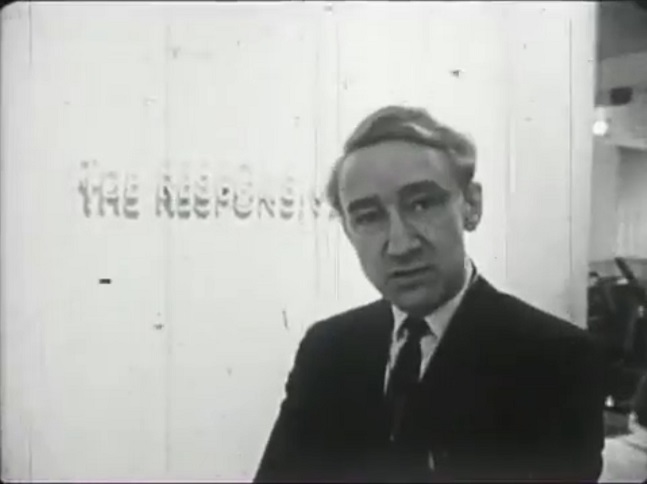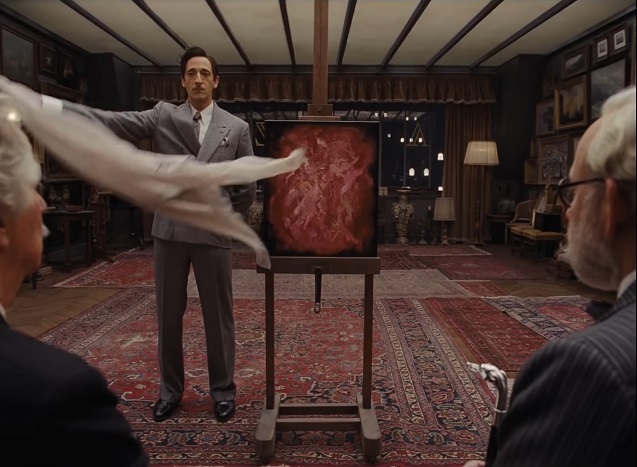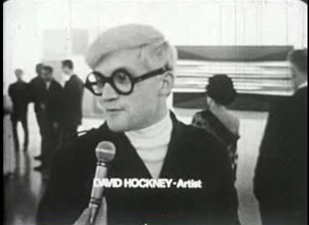ARCHAIC VISIONARIES OF POST-WAR ART IN EUROPE, AT VALENCIA d'ART MODERN (IVAM)

Thanks to Antonio for sending along this article by Ferran Bono at El País, about a new exhibition in Spain that includes Brian De Palma's documentary short, The Responsive Eye:
They were archaic visionaries. They raised the need to start "from scratch" after the horror of World War II. They wanted to break with expressionism and the gestures of post-war art, work in groups and use the technologies of the moment, light, optical effects, scientific research, turn painting upside down, as can be seen in the exhibition Far from the void . ZERO and post-war art in Europe.Organized by the Institut Valencià d'Art Modern (IVAM), the exhibition exhibits works by artists such as Yves Klein, Jean Tinguely, Piero Manzoni, Equipo 57 or Lucio Fontana, the spiritual father of most of them. And it also includes a rarity that reveals the influence exerted by these creators gathered in cities like Düsseldorf, Milan, Amsterdam, Paris or Zagreb.
This is the documentary directed in 1966 at the age of 25 by a then unknown filmmaker, Brian de Palma, about the exhibition The responsive eye that the MoMA in New York mounted a year earlier. It exhibited works by these European creators and their referents, as well as other North American artists who had followed in the footsteps of the first, exploring the world of illusions and optical effects, of advances in science, in the production of movement in the painting. The director of films as popular as Carrie, who stopped studying science to dedicate himself to cinema, where he stood out for his visual ability, interviews the protagonists with a camera in hand and shows examples of these abstract works, encouraged by the precedents of the avant-garde of between the wars, Moholy-Nagy's experimentation with light and engineering, or the geometric forms and composition of the Russian constructivists.
The documentary can be seen in the last room of the exhibition which, curated by Bartomeu Marí, reviews some of these movements that took place in Europe between 1957 and 1966, taking as a reference the ZERO group, made up of Heinz Mack, Otto Piene and Gunter Uecker , whose ideas spread through the magazine of the same name. It brings together a total of 175 works, including paintings, sculptures, documents and films, from the IVAM collection, the Zero Foundation and numerous museums and galleries. The exhibition opens this Thursday and runs until February 12.
“The exhibition allows us to understand the hinge position that these groups exercised between the historical avant-gardes and subsequent relational art, while bringing us closer to the long 1960s, with critical episodes such as the Cold War, capitalist developmentalism and so many other utopias. and dystopias that end up shifting the focus towards other forms of art such as pop or minimal”, explained this Wednesday Nuria Enguita, director of the IVAM.
Organized around five rooms, the exhibition shows the aesthetic proposals of this generation of artists, far removed from the prevailing expressionism. "In the first introduction room we remember the veneration that the young artists of the moment had for Lucio Fontana", according to the curator. The Italian-Argentinean Lucio Fontana (1899-1968) was the founder in 1946 of spatialism, which sought to eradicate the art of the easel in painting and try to capture movement and time.
A second room contrasts the scenes of Düsseldorf, where the ZERO magazine is published, and that of Milan, where the Azimuth Gallery and the magazine of the same name animated the European scene for a short year. The following gallery contrasts the Dutch scene with influential artists like Yves Klein and Jean Tinguely.
The exhibition continues with the group of younger Italian artists "who investigate movement, optical effects and the first experiments with the cyber world, the interactivity between viewer and work, before it was called digital," said Marí. The exhibition concludes with installations that include light and movement.
There is also a room dedicated to the works of the Spanish artists from Team 57 (Luis Aguilera, Ángel Duarte, José Duarte, Juan Serrano and Agustín Ibarrola), who participated in various exhibitions related to the new trend with proposals that matched the debates of the moment, just as young Italian artists did who created what we now call immersive installations.
Marí pointed out that the experimentation with light, mirrors and movement in the work of those artists was later applied in recreational and festive activities, in nightlife, in the discos that were experiencing their golden age.
“They were a generation that, having lived through the war as children, wanted to move away from the void to propose a new art, in the spirit of the purest avant-garde, an art that, far from the idea of genius, already proposed an art accessible to all”, affirmed Nuria Enguita.
Updated: Thursday, September 29, 2022 8:21 AM CDT
Post Comment | Permalink | Share This Post















